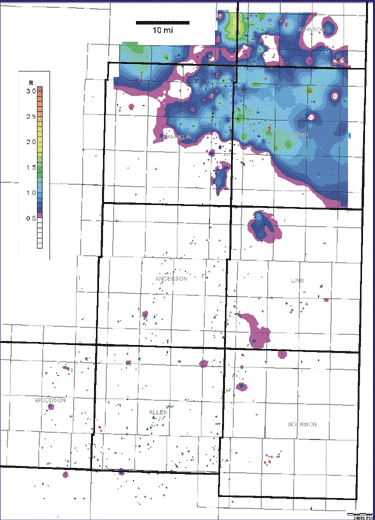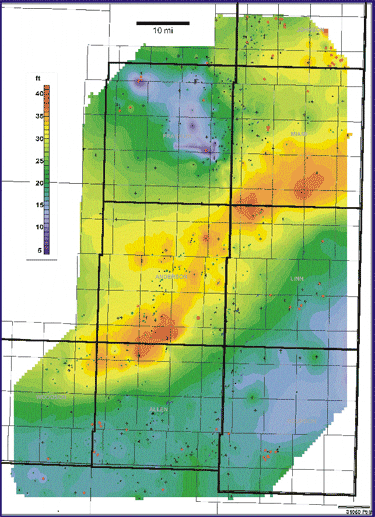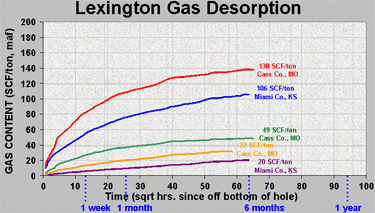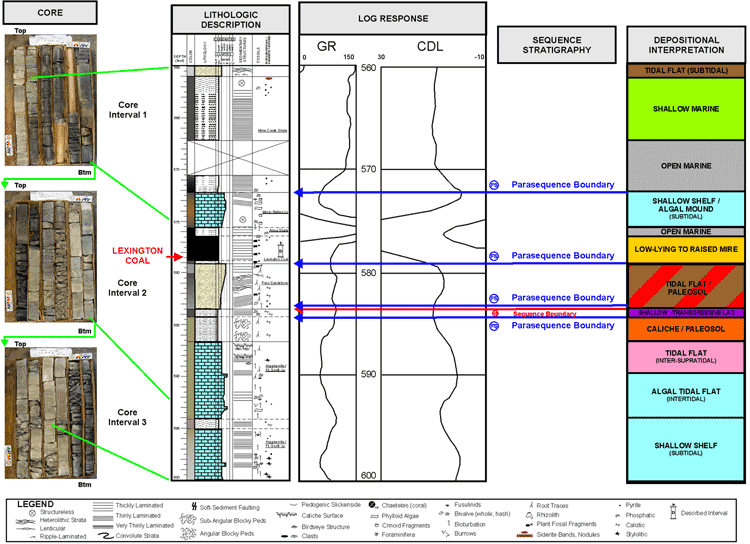 |
|
Kansas Geological Survey Open-file Report 2003-51 |
Depostional Environments:Lexington Coal
Due to depositional hiatus, peat-forming environments and their overlying and underlying sediments are not necessarily related (McCabe, 1984). However, depositional environments can influence coal-seam geometry, thickness, lateral extent, and ash and sulfur contents (McCabe, 1991). These characteristics, along with the type of peat-forming environment, may affect coal-gas productivity. Additionally, depositional interpretation allows for the placement of coals and adjacent strata into a sequence stratigraphic framework resulting in a better understanding of the variability of coal characteristics and gas potential.
The information (lithologic descriptions and interpretations, log curves, and coal-quality and gas-content data) presented for the four selected coals of this poster are based from a core location in Miami County, Kansas.
Click on above image to show more detail
 |
 |
| Lexington Coal Isopach Map (C.I. = 0.1 ft.) | Higginsville Isopach (C.I. = 1 ft.) |

The Lexington coal is only present in the northeastern portion of the study area where it appears to form in the isopach lows of the underlying Higginsville Limestone Member. Isopach highs and flanks in the Higginsville Limestone Member are interpreted as carbonate mounds. In core, the Lexington lies directly above a heterolithic, tide-influenced sand that infills eroded valleys in the Higginsville. Ash and sulfur contents indicate that the peat may have formed in a low to slightly raised mire with some marine influence and protection from detrital influx. The Lexington at relatively shallow depth has high gas contents (>100 scf/ton)--higher than deeper coals within the same well.

|
|
e-mail : webadmin@kgs.ku.edu
Last updated October 2003
http://www.kgs.ku.edu/PRS/publication/MidAAPG2003-1/P1-04.html
